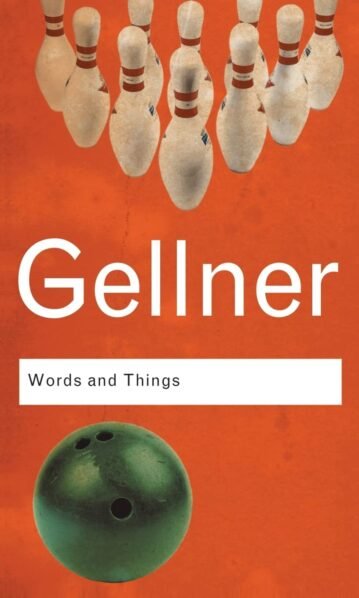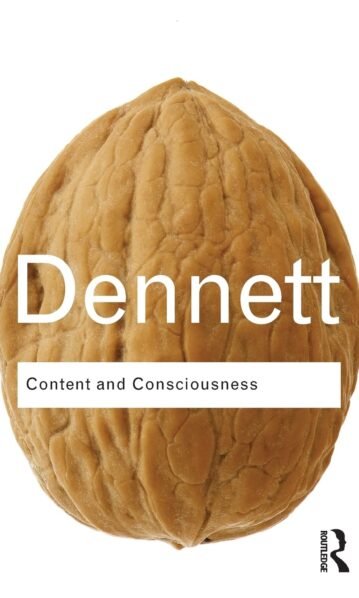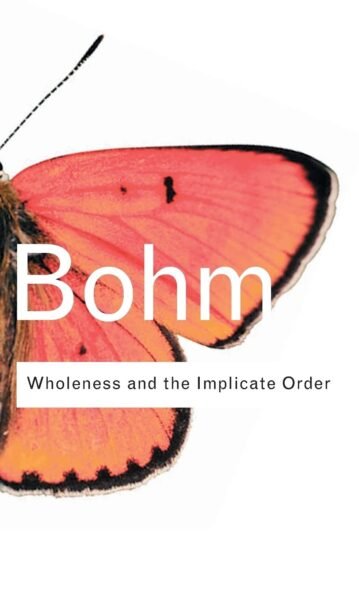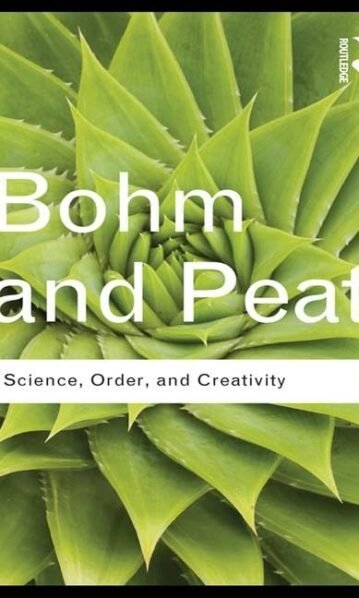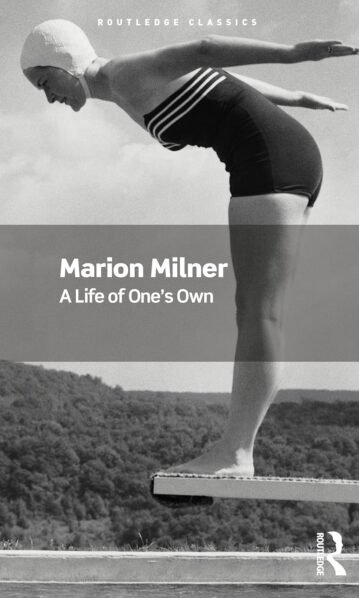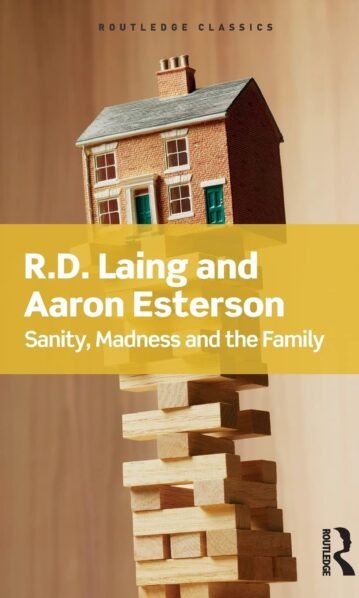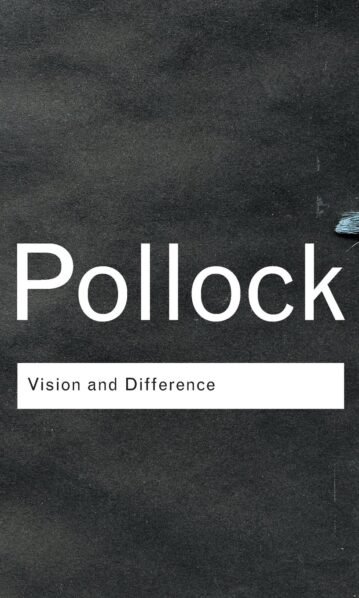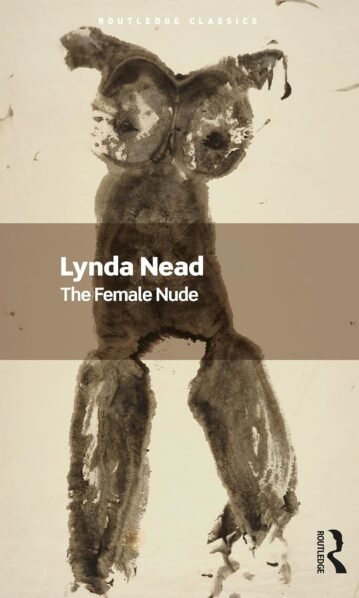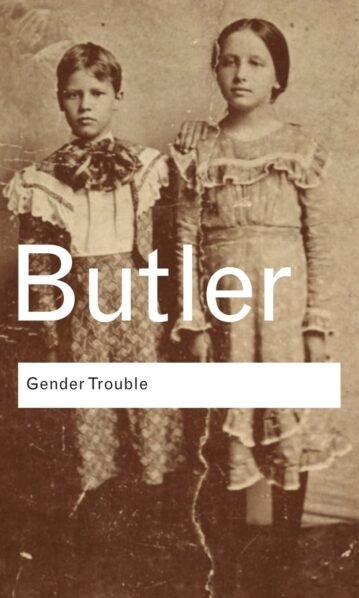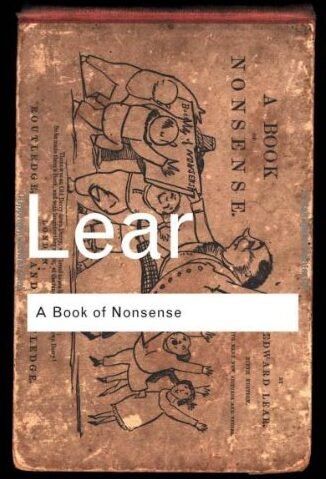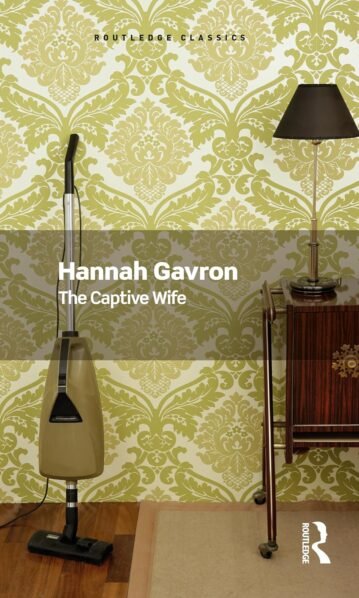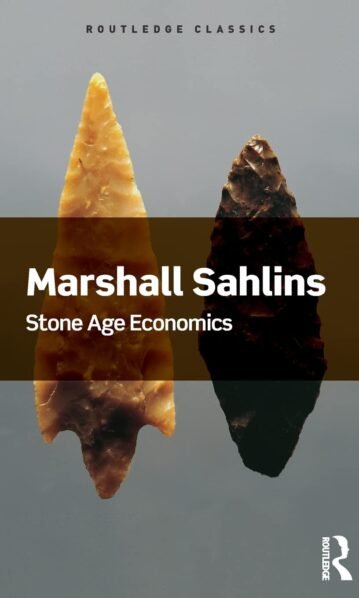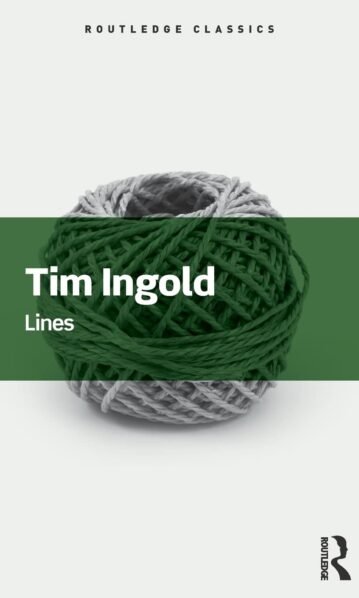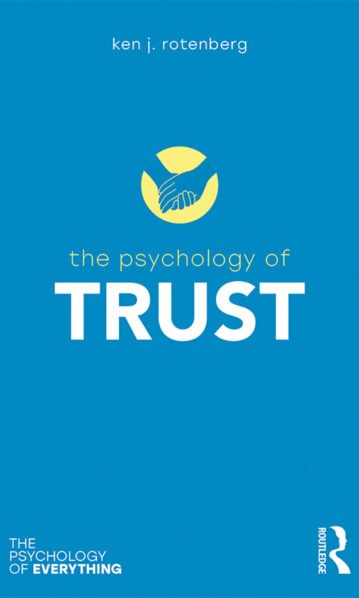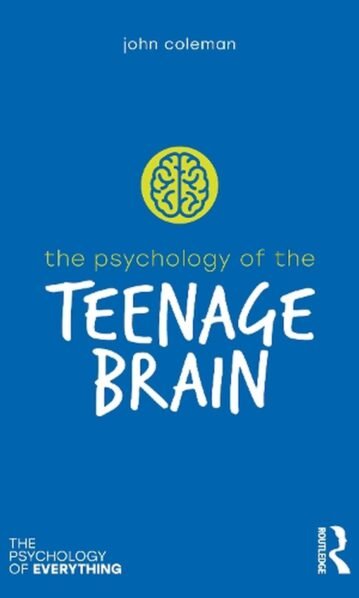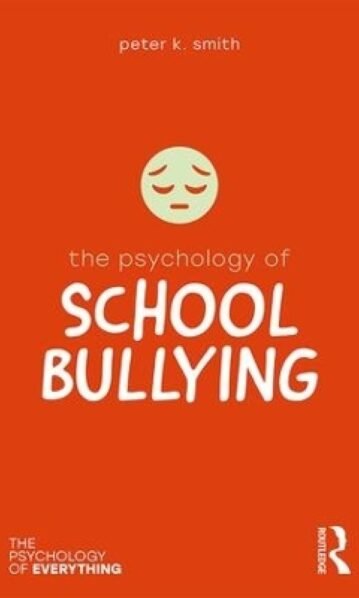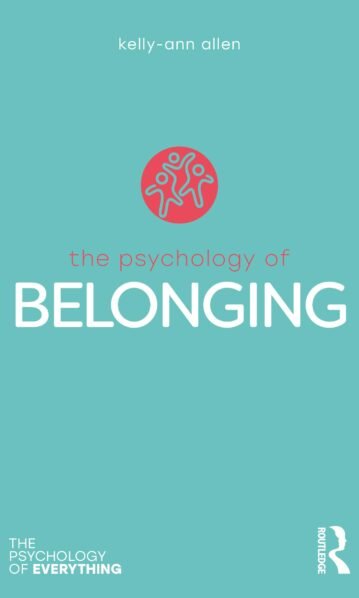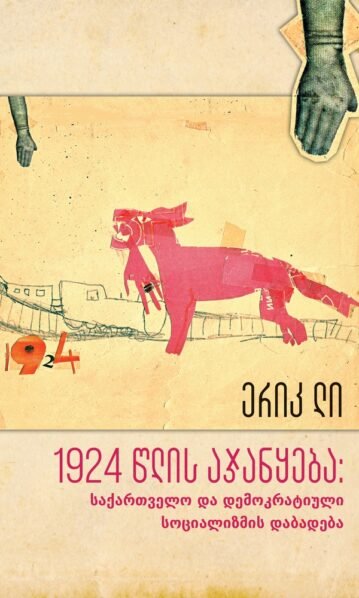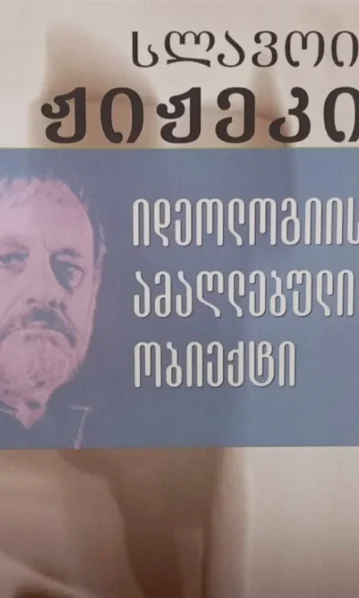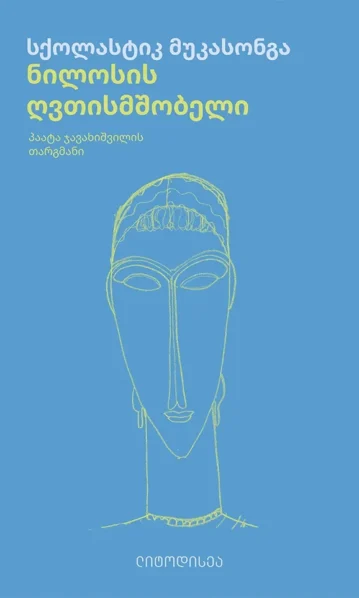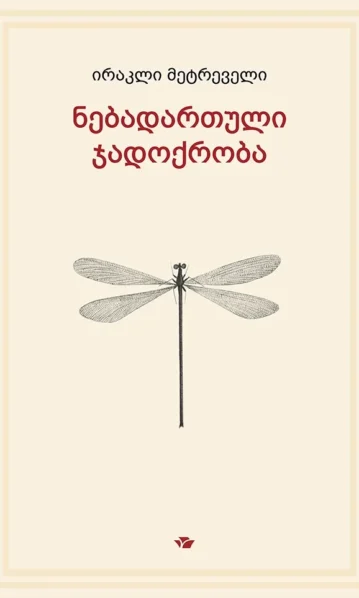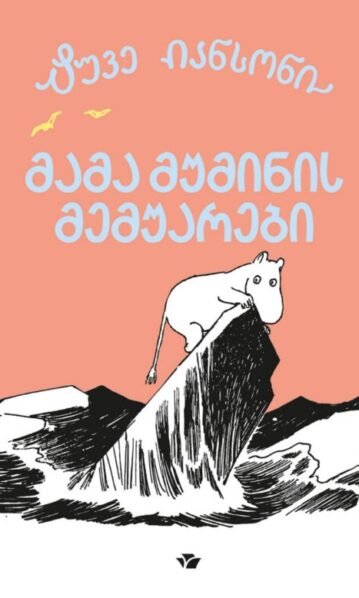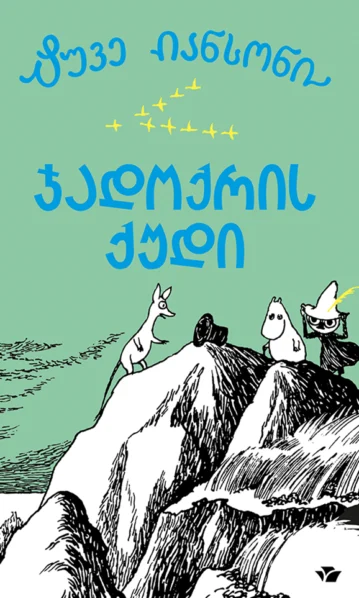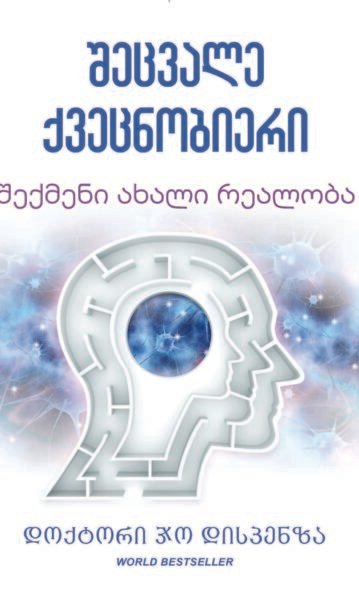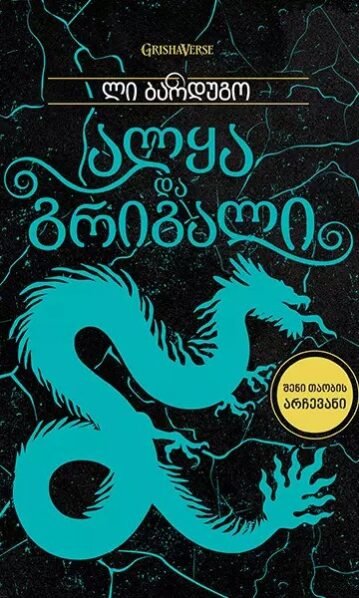რბილი
Words and Things
65,00 ₾When Ernest Gellner was his early thirties, he took it upon himself to challenge the prevailing philosophical orthodoxy of the day, Linguistic Philosophy. Finding a powerful ally in Bertrand Russell, who provided the foreword for this book, Gellner embarked on the project that was to put him on the intellectual map.
The first determined attempt to state the premises and operational rules of the movement, Words and Things remains philosophy’s most devastating attack on a conventional wisdom to this day.
Content and Consciousness
66,00 ₾Content and Consciousness is an original and ground-breaking attempt to elucidate a problem integral to the history of Western philosophical thought: the relationship of the mind and body. In this formative work, Dennett sought to develop a theory of the human mind and consciousness based on new and challenging advances in the field that came to be known as cognitive science. This important and illuminating work is widely-regarded as the book from which all of Dennett’s future ideas developed. It is his first explosive rebuttal of Cartesian dualism and one of the founding texts of philosophy of mind.
Wholeness and the Implicate Order
66,00 ₾David Bohm was one of the foremost scientific thinkers and philosophers of our time. Although deeply influenced by Einstein, he was also, more unusually for a scientist, inspired by mysticism. Indeed, in the 1970s and 1980s he made contact with both J. Krishnamurti and the Dalai Lama whose teachings helped shape his work. In both science and philosophy, Bohm’s main concern was with understanding the nature of reality in general and of consciousness in particular. In this classic work he develops a theory of quantum physics which treats the totality of existence as an unbroken whole. Writing clearly and without technical jargon, he makes complex ideas accessible to anyone interested in the nature of reality.
Science, Order and Creativity
66,00 ₾One of the foremost scientists and thinkers of our time, David Bohm worked alongside Oppenheimer and Einstein. In Science, Order and Creativity he and physicist F. David Peat propose a return to greater creativity and communication in the sciences. They ask for a renewed emphasis on ideas rather than formulae, on the whole rather than fragments, and on meaning rather than mere mechanics. Tracing the history of science from Aristotle to Einstein, from the Pythagorean theorem to quantum mechanics, the authors offer intriguing new insights into how scientific theories come into being, how to eliminate blocks to creativity and how science can lead to a deeper understanding of society, the human condition and the human mind itself. Science, Order and Creativity looks to the future of science with elegance, hope and enthusiasm.
A Life of One’s Own
66,00 ₾This is what I really want. I want to discover ways to discriminate the important things in human life. I want to find ways of getting past this blind fumbling with existence.’ – Marion Milner, from A Life of One’s Own.
How often do we really ask ourselves, ‘What will make me happy? What do I really want from life?’ In A Life of One’s Own Marion Milner, a renowned British psychoanalyst, artist and autobiographer, takes us on an extraordinary and compelling seven-year inward journey to discover what it is that makes her happy.
On its first publication, W. H. Auden found the book ‘as exciting as a detective story’ and, as Milner searches out clues, the reader quickly becomes involved in the chase. Using her own personal diaries, she analyses moments of everyday life that can bring surprising joy, such as walking, listening to music, and drawing. She also records, in a disarmingly clear and insightful manner, the struggle between the urge to order and control one’s thoughts and standing back to let them wander where they may.
A pioneering account of lived experience that also anticipates the contemporary phenomenon of mindfulness, A Life of One’s Own is a great adventure in thinking and living whose insights remain as fresh today as they were on the book’s first publication in the 1930s.
This Routledge Classics edition includes a revised Introduction by Rachel Bowlby.
Sanity, Madness and the Family
66,00 ₾In the late 1950s the psychiatrist R.D.Laing and psychoanalyst Aaron Esterson spent five years interviewing eleven families of female patients diagnosed as ‘schizophrenic’. Sanity, Madness and the Family is the result of their work. Eleven vivid case studies, often dramatic and disturbing, reveal patterns of affection and fear, manipulation and indifference within the family. But it was the conclusions they drew from their research that caused such controversy: they suggest that some forms of mental disorder are only comprehensible within their social and family contexts; their symptoms the manifestations of people struggling to live in untenable situations.
Sanity, Madness and the Family was met with widespread hostility by the psychiatric profession on its first publication, where the prevailing view was to treat psychosis as a medical problem to be solved. Yet it has done a great deal to draw attention to the complex and contested nature of psychosis. Above all, Laing and Esterson thought that if you understood the patient’s world their apparent madness would become socially intelligible.
This Routledge Classics edition includes a new Foreword by Hilary Mantel.
Vision and Difference
65,00 ₾Griselda Pollock provides concrete historical analyses of key moments in the formation of modern culture to reveal the sexual politics at the heart of modernist art. Crucially, she not only explores a feminist re-reading of the works of canonical male Impressionist and Pre-Raphaelite artists including Edgar Degas and Dante Gabriel Rossetti, but also re-inserts into art history their female contemporaries – women artists such as Berthe Morisot and Mary Cassatt.
Pollock discusses the work of women artists such as Mary Kelly and Yve Lomax, highlighting the problems of working in a culture where the feminine is still defined as the object of the male gaze. Now published with a new introduction, Vision and Difference is as powerful as ever for all those seeking not only to understand the history of the feminine in art, but also to develop new strategies for representation for the future.
The Female Nude
75,00 ₾The history of Western art is saturated with images of the female body. Lynda Nead’s The Female Nude was the first book to critically examine this phenomenon from a feminist perspective and ask: how and why did the female nude acquire this status?
In a deft and engaging manner, Lynda Nead explores the ways in which acceptable and unacceptable images of the female body are produced, issues which have been reignited by current controversies around the patriarchy, objectification and pornography. Nead brilliantly illustrates the two opposing poles occupied by the female nude in the history of art; at one extreme the visual culmination of enlightenment aesthetics; at the other, spilling over into the degraded and the obscene. What both have in common, however, is the aim of containing the female body.
Gender Trouble
75,00 ₾One of the most talked-about scholarly works of the past fifty years, Judith Butler’s Gender Trouble is as celebrated as it is controversial.
Arguing that traditional feminism is wrong to look to a natural, ‘essential’ notion of the female, or indeed of sex or gender, Butler starts by questioning the category ‘woman’ and continues in this vein with examinations of ‘the masculine’ and ‘the feminine’. Best known however, but also most often misinterpreted, is Butler’s concept of gender as a reiterated social performance rather than the expression of a prior reality.
Thrilling and provocative, few other academic works have roused passions to the same extent.
A Book of Nonsense
56,00 ₾From the benighted Old Man with a Beard to the erudite Perpendicular Purple Polly, Edward Lear’s world is inhabited by a bewildering variety of oddities. One of the world’s most loved writers, Lear’s verse has delighted whole generations of readers. Here, after 140 years, is the original edition of A Book of Nonsense, from the original publishers. Complete with Lear’s own remarkable illustrations, this treasure trove of nonsense is guaranteed to hold readers spellbound for generations more!
The Captive Wife
66,00 ₾In 1965, at the age of twenty-nine, the young sociologist Hannah Gavron took her own life. A year later, the book based on the research she carried out for her thesis was published as The Captive Wife. Based on first-hand accounts of the lives of working-class and middle-class women in Kentish Town in London, it was one of the earliest works of British, sociological feminism and has since become a feminist classic.
Arguing that motherhood stripped women of independence as it often brought an end to paid work, Gavron explores how their values and aspirations as women came into conflict with the traditional role they had to play as mothers.
Written in simple prose and fair-minded in its approach, it became an inspirational book for many mothers, feminists and activists seeking equality for women and remains a vital book today.
This Routledge Classics edition includes a new Foreword by Ann Oakley.
Stone Age Economics
65,00 ₾Since its first publication over forty years ago Marshall Sahlins’s Stone Age Economics has established itself as a classic of modern anthropology and arguably one of the founding works of anthropological economics. Ambitiously tackling the nature of economic life and how to study it comparatively, Sahlins radically revises traditional views of the hunter-gatherer and so-called primitive societies, revealing them to be the original “affluent society.”
Sahlins examines notions of production, distribution and exchange in early communities and examines the link between economics and cultural and social factors. A radical study of tribal economies, domestic production for livelihood, and of the submission of domestic production to the material and political demands of society at large, Stone Age Economics regards the economy as a category of culture rather than behaviour, in a class with politics and religion rather than rationality or prudence. Sahlins concludes, controversially, that the experiences of those living in subsistence economies may actually have been better, healthier and more fulfilled than the millions enjoying the affluence and luxury afforded by the economics of modern industrialisation and agriculture.
This Routledge Classics edition includes a new foreword by David Graeber, London School of Economics.
Lines
65,00 ₾What do walking, weaving, observing, storytelling, singing, drawing and writing have in common? The answer is that they all proceed along lines. In this extraordinary book Tim Ingold imagines a world in which everyone and everything consists of interwoven or interconnected lines and lays the foundations for a completely new discipline: the anthropological archaeology of the line.
Ingold’s argument leads us through the music of Ancient Greece and contemporary Japan, Siberian labyrinths and Roman roads, Chinese calligraphy and the printed alphabet, weaving a path between antiquity and the present. Drawing on a multitude of disciplines including archaeology, classical studies, art history, linguistics, psychology, musicology, philosophy and many others, and including more than seventy illustrations, this book takes us on an exhilarating intellectual journey that will change the way we look at the world and how we go about in it.
This Routledge Classics edition includes a new preface by the author.
The Psychology of Trust
45,00 ₾What makes us trust people? How is trust developed and maintained? Is Western society facing a crisis of trust?
The Psychology of Trust addresses trust issues that are directly relevant to peoples’ experiences in their daily lives. It identifies the factors that cause people to trust, and the consequences of trust for real world issues in health, politics, terrorism, the workplace, and religious faith. It also explores the impact of a lack of trust, and what causes distrust of individuals, groups and organisations.
In a world where trust impacts our daily lives, The Psychology of Trust shows the role trust plays in our relationships, and provides practical guidance regarding our own trust in others.
The Psychology of the Teenage Brain
45,00 ₾Why do teenagers stay up late and struggle to get up in the morning? Do teenagers really take more risks? What is happening with teenagers’ hormones?
The Psychology of the Teenage Brain offers all those involved in teenagers’ lives insight into what’s happening in their brains and how understanding them can improve relationships and communication at this crucial stage. It explains key topics, including the way the brain changes during adolescence, the role of hormones, and what we really know about risk and resilience, sleep and peer pressure. It challenges the stereotype of the ”snowflake generation” and explores young people’s mental health.
Written for all parents and caregivers, this book will help with the challenges of having a teenager in the home. It also offers crucial understanding for all students and practising professionals in the fields of social work, counselling, health and education who work with teenagers.
The Psychology of Social Media
45,00 ₾Are we really being ourselves on social media? Can we benefit from connecting with people we barely know online? Why do some people overshare on social networking sites?
The Psychology of Social Media explores how so much of our everyday lives is played out online, and how this can impact our identity, wellbeing and relationships. It looks at how our online profiles, connections, status updates and sharing of photographs can be a way to express ourselves and form connections, but also highlights the pitfalls of social media including privacy issues.
From FOMO to fraping, and from subtweeting to selfies, The Psychology of Social Media shows how social media has developed a whole new world of communication, and for better or worse is likely to continue to be an essential part of how we understand our selves.
The Psychology of School Bullying
45,00 ₾Why do children get involved with bullying? Does cyberbullying differ from traditional bullying? How can bullying at school be prevented?
The Psychology of School Bullying explores what bullying is and what factors lead to children playing roles as bullies, victims, defenders, bystanders or even some combination of these The book examines proactive strategies to reduce the likelihood of bullying happening in school, but also looks at what action the school could take if bullying incidents do occur.
As bullying can have such far-reaching consequences and sometimes tragic outcomes, it is vital to grasp how and why it happens, and The Psychology of School Bullying shows how improved knowledge and understanding can lead to effective interventions.
The Psychology of Politics
45,00 ₾How do some political leaders capture popular support? What is the appeal of belonging to a nation? Can democracy thrive?
The Psychology of Politics explores how the emotions which underpin everyday life are also vital in what happens on the political stage. It draws on psychoanalytic ideas to show how fear and passion shape the political sphere in our changing societies and cultures, and examines topical social issues and events including Brexit, the changing nature of democracy, activism, and Trump in America.
In a changing global political climate, The Psychology of Politics shows us how we can make sense of what drives human conduct in relation to political ideas and action.
The Psychology of Celebrity
45,00 ₾Why are we fascinated by celebrities we’ve never met? What is the difference between fame and celebrity? How has social media enabled a new wave of celebrities?
The Psychology of Celebrity explores the origins of celebrity culture, the relationships celebrities have with their fans, how fame can affect celebrities, and what shapes our thinking about celebrities we admire. The book also addresses the way in which the media has been and continues to be an outlet for celebrities, culminating in the role of social media, reality television, and technology in our modern society.
Drawing on research featuring real life celebrities from the Kardashians to Michael Jackson, The Psychology of Celebrity shows us that celebrity influence can have both positive and negative outcomes and the impact these can have on our lives.
The Psychology of Belonging
45,00 ₾Can a sense of belonging increase life satisfaction? Why do we sometimes feel lonely? How can we sustain lasting human connections?
The Psychology of Belonging explores why feeling like we belong is so important throughout our lives, from childhood to old age, irrespective of culture, race or geography. With its virtues and shortcomings, belonging to groups such as families, social groups, schools, workplaces and communities is fundamental to our identity and wellbeing, even in a time when technology has changed the way we connect with each other.
In a world where loneliness and social isolation is on the rise, The Psychology of Belonging shows how meaningful connections can build a sense of belonging for all of us.
ცხებული და შერისხული
20,00 ₾ანო ტვილდიანი თავის წიგნში – “ცხებული და შერისხული” სხვადასხვა ზოგადსაკაცობრიო თემას ფილოსოფიური კუთხით ეხება. რომანში წამოჭრილია, როგორც სახელმწიფო მოწყობისა და საზოგადოებრივი ფორმების საკითხები, ისე განკერძოებით ადამიანური ფსიქოლოგიური პრობლემები, რომლებსაც ერთმანეთთან პერსონაჟების მეშვეობით აკავშირებს. რომანი გამოგონილ სახელმწიფოში განვითარებულ პროცესებზე მოგვითხრობს, სადაც სახელმწიფო ხელისუფალნი და მმართველობის ფორმები ერთმანეთს ენაცვლებიან…
1924 წლის აჯანყება: საქართველო და დემოკრატიული სოციალიზმის დაბადება
20,00 ₾1924 წლის ეროვნული აჯანყების 100 წლისთავთან დაკავშირებით გამომცემლობა „ზიარი“ გთავაზობთ ერიკ ლის ახალ წიგნს „1924 წლის აგვისტოს აჯანყება – საქართველო და დემოკრატიული სოციალიზმის დაბადება“.
წიგნში დიდი ადგილი ეთმობა 1921-1924 წლების პერიოდს, აღწერილია ბოლშევიკთა ქმედებები და ქართველი ხალხის წინააღმდეგობა, რომელიც წინ უძღოდა აჯანყებას. ასევე განხილულია საქართველოს დაპყრობის თაობაზე ევროპელი სოციალ-დემოკრატების პოზიცია, განსაკუთრებით იმ დელეგაციის წევრებისა, რომლებიც 1920 წელს ესტუმრნენ საქართველოს.
ავტორი მკითხველს აცნობს 1924 წლის ეროვნული აჯანყებისა და, განსაკუთრებით, მისი სასტიკად ჩახშობის გავლენას ევროპაში მემარცხენე მოძრაობაზე. წიგნში აღწერილია აჯანყების მიმდინარეობა და ჩახშობა და ის გამოძახილი, რომელიც ამ მოვლენებს მოჰყვა ევროპაში.
პენელოპიადა
14,95 ₾„პენელოპიადა” უძველესი მითის ახლებურად გააზრებას გვთავაზობს, ვითარებას, როცა საზოგადოებაში ძალაუფლება მამაკაცს ეკუთვნის მარგარეტ ეტვუდის ვერსიაში ოდისევსის ცოლის ამბავი სულ სხვაგვარად წარმოგვიდგება. ეს წიგნი გარდაცვლილი პენელოპეს დღიურია ჰადესიდან. მთავარი გმირი გვიამბობს თავისი ბავშვობის შემდეგ კი ქორწინების ამბავს, აღგვიწერს ლეგენდარულ ოდისევსს არა ჰომეროსის, არამედ თავისი, ქალის თვალით გაცნობილს, როგორ ელოდა ოცი წლის განმავლობაში მეუღლეს. რამდენი რამ გადაიტანა. ეს არის ანტიკური მითოლოგიის პერსონაჟებისა და რეალიების სრულიად სხვაგვარად გააზრება და მკითხველის გადასაწყვეტია, გაიზიარებს თუ არა მას.
საქართველოს არქეოლოგიისთვის
39,95 ₾წინამდებარე წიგნში საქართველოს იბერია-კოლხური პერიოდის (ძვ. წ VI ს – ახ.წ. IV ს.) ისტორიისა და არქეოლოგიის საკითხებია განხილული.
ნაშრომში ახალი არქეოლოგიური მასალისა და წერილობითი წყაროების ურთიერთშედარებისა და კვლევის საფუძველზე, გარკვეულწილად, ხერხდება საქართველოს ხსენებული ეპოქის ისტორიის მეტ-ნაკლები აღდგენა.
წიგნი განკუთვნილია საქართველოს ისტორიით დაინტერესებული მითხველისთვის. ის ახალ, საინტერესო ინფორმაციას მიაწვდის სკოლის მასწავლებლებსა და სტუდენტებს.
იდეოლოგიის ამაღლებული ობიექტი
38,00 ₾სლოვენი ფილოსოფოსი და ფსიქოანალიტიკოსი სლავოი ჟიჟეკი თანამედროვეობის ყველაზე ცნობილი და პოპულარული მოაზროვნეა. იდეოლოგიის და სუბიექტის თემის გააზრებას ეძღვნება წინამდებარე წიგნი “იდეოლოგიის ამაღლებული ობიექტი”. ამ წიგნმა ჟიჟეკს საერთაშორისო აღიარება მოუპოვა.
ნილოსის ღვთისმშობელი
15,90 ₾რომანში „ნილოსის ღვთისმშობელი“ მოქმედება ვითარდება 1970-იან წლებში აფრიკაში, რუანდაში, ქალთა სამონასტრო სკოლა-პანსიონში. აქ მოზარდი გოგონები ცხოვრობენ, სწავლობენ და ემზადებიან, რომ გახდნენ კარგი ცოლები. ამასობაში კი ქვეყანაში ვითარება იძაბება. ჰუტუსა და ტუტსის ხალხებს შორის მწიფდება ეთნიკური კონფლიქტი, რომელიც შეიძლება ნამდვილ კატასტროფად იქცეს…
სქოლასტიკ მუკასონგა (დ. 1956 წ.) რუანდაში დაიბადა და ცხოვრობდა. გენოციდის დროს ამოწყვიტეს ტუტსის ტომის მრავალი ათასი წარმომადგენელი, მათ შორის ავტორის ოჯახის 27 წევრი. იგი გადაურჩა ეთნიკურ დევნას, 1992 წლიდან ცხოვრობს საფრანგეთში და წერს ფრანგულად. რომანი „ნილოსის ღვთისმშობელი“ 2012 წელს გამოვიდა და რამდენიმე ლიტერატურული პრემია მოიპოვა. ქართულად ქვეყნდება პირველად.
გაიქეცი რომ გადარჩე
14,90 ₾აზარი დედასთან ერთად გამორბის თავისი მზიანი, ცხელი სოფლიდან. დედა-შვილის ცხოვრება ორ ნაწილად იხლიჩება – ტკბილ-მწარე მოგონებებად და გაურკვეველ, გრძელ მოლოდინად ქცეულ აწმყოდ პირქუშ, უცხო ირლანდიაში.
უკან, მონატრებულ სამშობლოში დაბრუნება და ღირსების შემლახავი ტრადიციის მორჩილება აზარისთვის სიკვდილის ტოლფასია. არადა თუ ამას არ დაამტკიცებს, უცხო ქვეყანა არ შეიფარებს. ბოლო არ უჩანს დაუსრულებელ დაკითხვებს, ლტოლვილთა თავშესაფარში უცხო ადამიანებთან ერთად ცხოვრებას… აზარისთვის ერთადერთი სიხარული ახალ მეგობართან ერთად სირბილია. სირბილი კი ამქვეყნად ყველაფერს ურჩევნია.
წიგნის ავტორი, ჯეინ მიჩელი ირლანდიაში ცხოვრობს. უნივერსიტეტის დამთავრების შემდეგ სხვადასხვა პრობლემის მქონე თინეიჯერებთან მუშაობდა. მან ბევრ ქვეყანაში იმოგზაურა და ორჯერ მიიღო მონაწილეობა დუბლინის 42-კილომეტრიან მარათონში.
ნებადართული ჯადოქრობა
14,90 ₾საბჭოთა კავშირი არსებობის ბოლო დღეებს ითვლის, მიხაილ გორბაჩოვი კი მეტაფორაზე ძველი სპარსული ტრაქტატის მოძიებას ავალებს პარიზში ჩანერგილ კა-გე-ბე-ს ჯაშუშს – სჯერა, რომ ამ დაკარგული ხელნაწერის მეშვეობით შეძლებს განწირული იმპერიის გადარჩენას. ისტორიის შემობრუნება გორბაჩოვს არ დასცალდება, სამაგიეროდ, ჯაშუში იმ მოუხელთებელ, ამოუცნობ სიტყვებს ეზიარება, რომელთა იდუმალი ლანდი მთელი ცხოვრება არ ასვენებდა და რომლებიც აურაცხელ ქონებას და ერთ ყოფილ საბჭოთა რესპუბლიკაში აბსოლუტურ ძალაუფლებას მოაპოვებინებენ. „ესაა მოციმციმე სიტყვები, გამოუძიებელი და გამოუკვლეველი და უფროსღა გამოუთარგმნელი, სამყაროს პირველწყარო. ისმინე მათი ფაქიზი შრიალი, განჭვრიტე მათი ლაღი მოძრაობები, იხარე მათთან ერთად“.
მაგიური რეალიზმისა და ალტერნატიული ისტორიული ჟანრის რომანი ნებადართული ჯადოქრობა ირაკლი მეტრეველის მეორე წიგნია.
მოს შვიდი დღე
12,90 ₾მო და კარლი 12 წლის ტყუპები არიან. უბრალოდ, როგორც კარლი იტყოდა, მოს `ადამიანთა უმეტესობისგან განსხვავებულად მოქცევა და წარმოუდგენელი სისულელეების ჩადენა შეუძლია~.
სანამ დედა დაბრუნდება სამსახურიდან, კარლი ძმაზე ზრუნავს, არადა, მოსთან ლოლიავის ნაცვლად, სხვა ბავშვებივით სიამოვნებით ითამაშებდა ფეხბურთს, იქროლებდა ველოსიპედით, შეხვდებოდა ნადიას, რომელიც ძალიან მოსწონს…
თუმცა, ყველაფრის მიუხედავად,
ვინ იცის, იქნებ კარლს უფრო
სჭირდება მო, ვიდრე მოს – კარლი?!
მამა მუმინის მემუარები
11,90 ₾„მივენდე ჩემი ბედის ვრასკვლავს და ისე დავადექი გზას, წარმოდგენაც არ მქონდა, რა საოცარი ამბები მელოდა წინ.“
ჯადოქრის ქუდი
11,90 ₾მუმინების ხეობა ჯადოქრობის ასპარეზად იქცა. ეს მას მერე მოხდა, როცა მუმინტროლმა, სნუსმუმრიკმა და სნიფმა მთის წვერზე ჯადოქრის ქუდი იპოვეს და შინ წაიღეს.
შვილობილი
8,90 ₾ეს წიგნი მორიგი მტკიცებულებაა იმისა, რომ ნაწარმოების მოცულობას საერთო არაფერი აქვს აზრის სიღრმესთან და ზემოქმედების ძალასთან.
ეს ემოციური ამბავი ირლანდიაში, უექსფორდში ხდება. ოჯახის დიასახლისი მორიგ ჯერზე დაორსულდა და ხელმოკლეობის გამო უფროსი გოგონებიდან ერთ-ერთი ზაფხულში დროებით საცხოვრებლად შორეულ ნათესავებს მიაბარეს. გოგონამ არ იცის, როდის დაბრუნდება სახლში. თავად იდეა ბავშვის უცხო ადამიანებთან გაგზავნის უცნაური და სასტიკიც კი შეიძლება მოგვეჩვენოს, მაგრამ ოჯახს სხვა გამოსავალი არ აქვს – ფინანსური გაჭირვების გამო იძულებულია, ასე მოიქცეს.
უცხო ოჯახში, უცხო ხალხთან ბავშვი გარემოცულია სითბოთი და სიყვარულით, რაც აქამდე არასდროს ჰქონია და ნელ-ნელა პოულობს სულიერ სიახლოვეს ადამიანებთან, რომლებიც მისი სისხლით ნათესავები არ არიან.
მაგრამ საიდუმლო მჟღავნდება და უცებ გოგონა აღმოაჩენს, თუ როგორი მოჩვენებითი იყო მისი იდილია.


